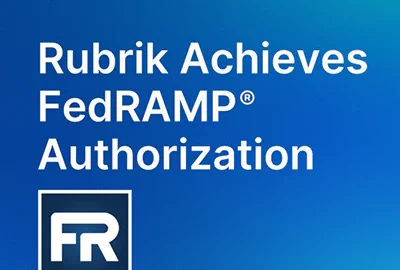Experts sound off on draft FITARA guidance
Federal News Radio is collecting reactions to the FITARA draft policy guidance from those who provided their decades of experience in federal IT, acquisition and...
The Office of Management and Budget released the much-anticipated implementation guidance for the Federal IT Acquisition Reform Act (FITARA).
Over the last four months, OMB reached out to federal experts in and outside of government and from across the CXO communities. Officials met with lawmakers who wrote the law. Federal CIO Tony Scott and his staff probably held more discussions about how best to develop this guidance than any previous policy effort.
OMB is accepting comments until May 30.
Federal News Radio is collecting reactions to the draft policy guidance from those who provided their decades of experience in federal IT, acquisition and management.
“I commend Deputy Director Beth Cobert, U.S. CIO Tony Scott, Federal Procurement Policy Administrator Anne Rung, and the entire E-Gov FITARA team, for developing excellent draft implementation guidance that is detailed, comprehensive, and representative of the collaborative process that the team engaged in as they formulated the proposal. The proposal represents an important milestone in transforming FITARA from the letter of the law on paper to the reality in practice across the federal government. Importantly, the draft guidance recognizes that effectively implementing enhanced CIO authorities requires that reforms be carried out across the entirety of an agency’s C-suite leadership. I look forward to working closely with the FITARA implementation team to further refine and enhance this proposal, particularly with respect to ensuring that agency CIOs utilize the full authority under FITARA to ensure that they have the right component agency CIOs in place now.”
— Rep. Gerry Connolly (D-Va.), co-author of FITARA
“It is very notable that the FITARA implementation is being released upon GITHUB. FITARA itself was crowdsourced using the Madison open source platform and received a host of citizen comments. I commend OMB for this direct citizen involvement, which is unprecedented and reflects the power of transparency. OMB’s core objectives align with the intent of Congress in formulating this legislation. The collaborative nature of the OMB guidance process mirrors the bipartisan nature of FITARA. This was the ‘secret’ to obtaining passage of the legislation. Collaboration is essential to meet the basic goals of the legislation, and to overcome the concerns of many, especially the CFO community, regarding the purposes and impact of the bill. A common baseline approach is necessary and appropriate to drive broader collaboration between the program offices and the CIO community. Coordination has been sorely lacking in the past. At the same time, CIOs cannot become bottlenecks to major and mission critical IT deployments. A rules based system that delegates the authority to make the necessary approvals while maintaining the necessary levels of IT oversight and governance will be critical to the effective implementation of the process.”
— Richard Beutel, principal Cyrrus Analytics LLC and former lead staff member on FITARA for the House Oversight and Government Reform Committee
“I am thrilled to see this strong and detailed guidance from OMB which incorporates the authorities granted years ago under Clinger-Cohen (CCA) while adding the additional responsibilities that FITARA provides for federal CIOs. The guidance also reflects two key elements. First, the changes that have taken place in IT in the almost 20 years since CCA was signed, both in technology itself as well as the way IT has become embedded as an essential part of the way any agency does business, serves citizens and so on. Second, OMB clearly learned from the … what’s the au courant phrase today … ‘flawed rollout’ of CCA. The guidance then was only a two page memo from a mid-level OMB staffer that left it up to each agency to decide authorities, organizational status and placement, reporting relationship, etc. The current mixed-quilt that exists across government today — CIOs that are just small policy shops reporting to a CFO or an Assistant Secretary for Administration with no say in budget formulation or acquisition decisions — is a direct result of that flawed implementation guidance of OMB then. There was a vague promise or threat that OMB would come back later and review/evaluate their “let a thousand flowers bloom” guidance but no such thing ever happened. As a scarred and cynical former federal CIO, I am heartened by both the strength and detail of this guidance and toast the OMB staff who crafted it, including CIO Tony Scott.”
— Alan Balutis, senior director and distinguished fellow at CISCO Systems
“OMB has taken an important step forward in releasing the draft of its FITARA guidance for public comment. This statute will have a significant impact on how government manages IT assets to promote efficiency and performance improvement, and making CIO authorities under the Clinger Cohen and E-Gov Acts clear as they work in partnership with other agency leaders. OMB has engaged in an open and consultative process to draft the guidance, and public comment will certainly help to strengthen the final guidance document.”
— Dan Chenok, executive director of the Center for The Business of Government, IBM Global Business Services and former OMB official
“I congratulate Congress and OMB on proposing the legislation, the first forward thinking statute in almost 20 years since enactment of the Clinger Cohen Act of 1996, and for soliciting public comments prior to finalization. The OMB proposed guidance builds upon prior attempts to improve the planning, acquisition and implementation of IT through policy to include: (1) aligning department-level CIO authority with responsibility without marginalizing the appropriate role of component CIOs in supporting their mission goals, (2) providing necessary oversight of IT projects without unnecessarily increasing burden through obtaining transparency to performance, clarity to challenges, accountability to progress, results, (3) encouraging the CXO community (e.g., CIO, CFO, CHCO, CAO/CPO) to plan and implement IT as an enterprise asset, and (4) identifying a single accountable and authorized official for IT execution.
“Based on lessons learned from the implementation of the Clinger-Cohen Act of 1996 and E-Gov Act of 2002, a key dimension to effectively implementing FITARA includes OMB’s ability to monitor, measure and hold agencies accountable for implementation, while enabling CIOs to optimize governance and results. I expect many agencies will utilize FITARA and the implementing guidance to further use IT as a catalyst for positive change. The federal government’s $80 billion IT portfolio makes it the largest in the world, therefore it should be the most effective at how it’s managed. This implementation guidance is a step in the right direction to this end.”
— Tim Young, principal Deloitte Digital and former deputy administrator in OMB’s Office of E-Government and IT
RELATED STORIES
OMB’s draft FITARA policy attempts to fix, move past IT reform efforts
Copyright © 2025 Federal News Network. All rights reserved. This website is not intended for users located within the European Economic Area.
Jason Miller is executive editor of Federal News Network and directs news coverage on the people, policy and programs of the federal government.
Follow @jmillerWFED






